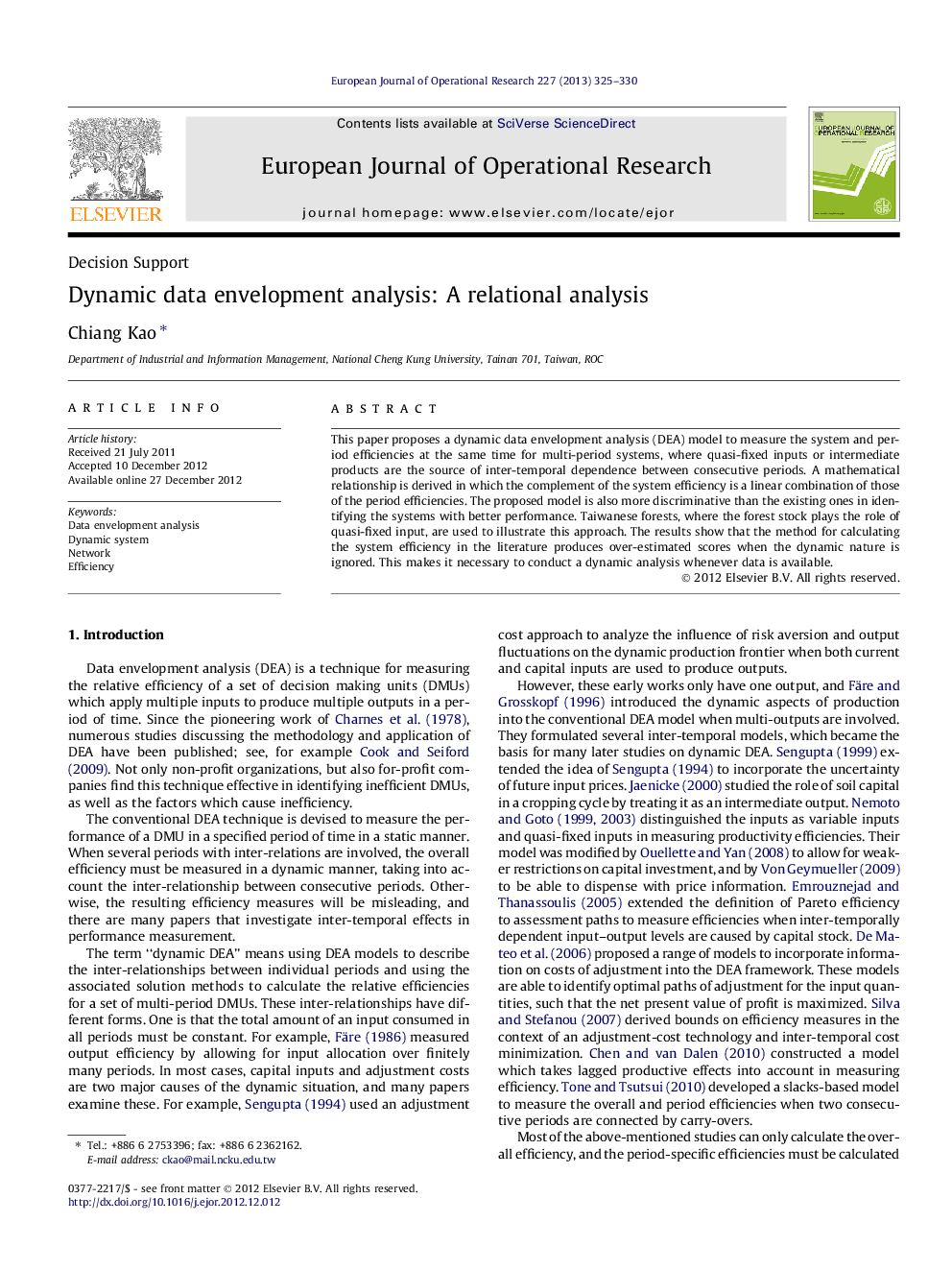| Article ID | Journal | Published Year | Pages | File Type |
|---|---|---|---|---|
| 476770 | European Journal of Operational Research | 2013 | 6 Pages |
This paper proposes a dynamic data envelopment analysis (DEA) model to measure the system and period efficiencies at the same time for multi-period systems, where quasi-fixed inputs or intermediate products are the source of inter-temporal dependence between consecutive periods. A mathematical relationship is derived in which the complement of the system efficiency is a linear combination of those of the period efficiencies. The proposed model is also more discriminative than the existing ones in identifying the systems with better performance. Taiwanese forests, where the forest stock plays the role of quasi-fixed input, are used to illustrate this approach. The results show that the method for calculating the system efficiency in the literature produces over-estimated scores when the dynamic nature is ignored. This makes it necessary to conduct a dynamic analysis whenever data is available.
► We develop a relational DEA model to measure the efficiency of a dynamic system. ► System efficiency is a linear combination of period efficiencies of the dynamic system. ► Ignoring the dynamic nature produces over-estimated efficiencies. ► Dynamic analysis is necessary whenever data is available.
